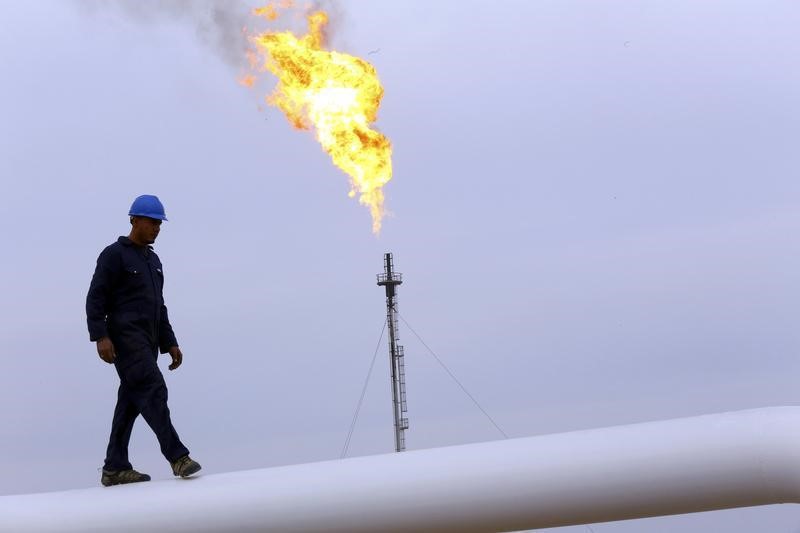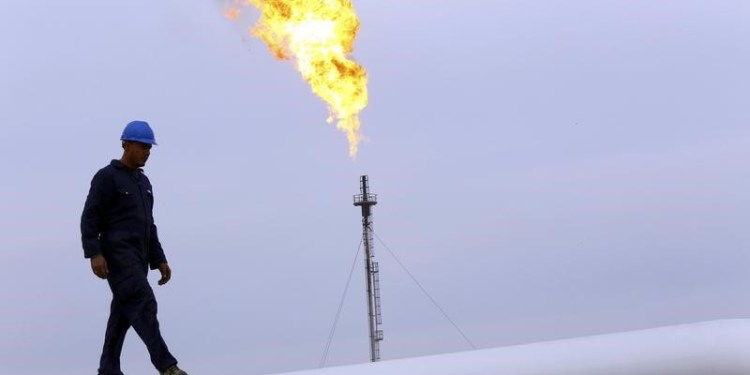
© Reuters.
(updates with settlement prices)
By Barani Krishnan
Investing.com – Oil bulls scored an eight winning week as Brent hit $85 per barrel, nearing Wall Street’s $90 call, as strong U.S. retail sales and a rebounding stock market fed risk appetite despite exploding inflation.
News of China having cut crude oil import quotas for independent refiners and U.S. inventory data from Thursday pointing to a third straight weekly build in crude stockpiles were put on the backburner.
In focus was a White House announcement on Friday that it will lift COVID-19 travel restrictions for fully vaccinated foreign nationals effective Nov. 8, a development that should boost jet fuel demand.
Also ringing in oil bulls’ ears were the International Energy Agency’s estimate on Thursday that the energy crunch would leave the global market short of 500,000 barrels per day — estimated by some to be as high as 700,000 bpd.
“It will take a trifecta of events to derail this oil price rally: OPEC+ unexpectedly boosts output, warm weather hits the northern hemisphere, and if the Biden administration taps the strategic petroleum reserves,” said Ed Moya, analyst at online trading platform OANDA.
U.S. crude’s West Texas Intermediate benchmark settled up 97 cents, or 1.2%, at $82.28 per barrel. Earlier in the session, it peaked at $82.48, its highest since 2014. For the week itself, WTI rose 3.7% for an eight-straight weekly gain that gave the U.S. crude benchmark a cumulative gain of 32%. For the year, WTI was up almost 70%.
London-traded Brent crude, the global benchmark for oil, settled up 68 cents, or 1%, at $84.86 after a three-year high at $85.09. Both Goldman Sachs and Morgan Stanley have called for $90 Brent before the end of the year.
Brent rose 3% on the week, for a sixth straight weekly gain that resulted in an accumulated gain of almost 17%. For the year, Brent was up 64%.
Oil’s latest run-up came after US retail sales numbers for September released by the Commerce Department on Friday showed a growth of nearly 14% on the year and a steady monthly expansion of 0.7% since August.
Economists tracked by Investing.com had expected a monthly decline of 0.2% for September retail sales due to challenges from the pandemic, especially inflation from surging commodity prices led by oil.
But almost every key sector of the economy saw positive sales last month, showing promise ahead of the holiday shopping season between October and December as festivities from Halloween to Thanksgiving and Christmas take place.
The higher retail sales extended gains on the S&P 500, which already had its best day in seven months in the previous session. The key U.S. stock index had resisted rallying for almost two weeks prior to Thursday, on worries that the rally in oil and other commodities was feeding runaway inflation.
Meanwhile, China was reported to have cut crude oil import quotas for independent refiners in a move to curb their growing oil market clout.
According to Reuters, Beijing’s latest crude import quotas for independents is 14.89 million tons. This brings the total for the year to 177.14 million tons, which compares with 184.55 million tons for 2020. That would normally be bearish news for oil. But as OilPrice’s Irina Slav noted; “there is so much going on for the bulls it’s likely that the effect of what amounts to a future decline in Chinese oil imports will be temporary”.
Also on Wednesday, the Energy Information Administration reported that U.S. crude stockpiles rose by 6.09 million barrels in the week to Oct. 8, following through with the 2.35-million and 4.58-million builds in the previous two weeks.
The build came as weekly U.S. refiner activity remained stubbornly below the typical 90% of capacity for this time of year, ostensibly due to WTI pricing — which even some refineries feel had gone up too much, too fast.
Source: Investing.com

























